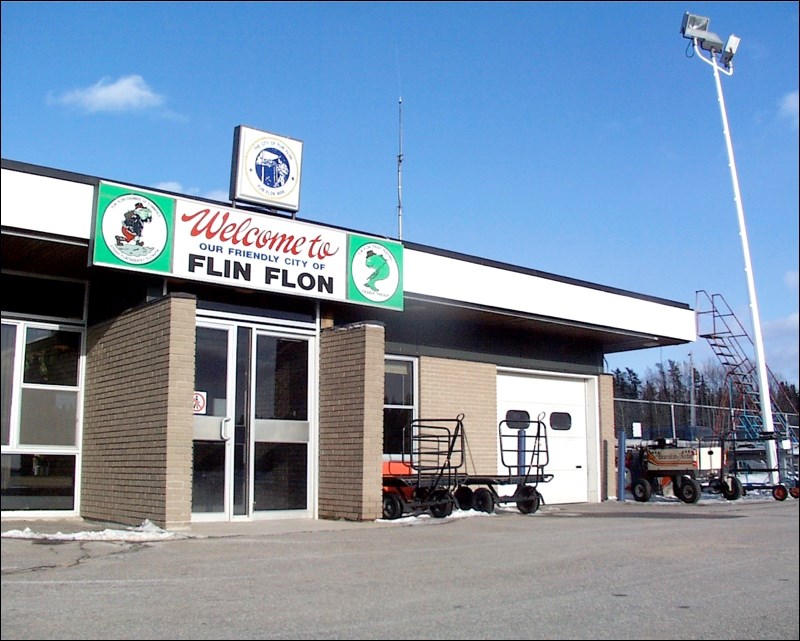No work has been cleared for takeoff, but Flin Flon city council is actively researching a possible overhaul of the municipal airport terminal.
Council will hire a consultant to produce a preliminary study on the potential refurbishment and renovation of the Joe van Nes Airport Terminal Building.
“There’s still life left in it, but we have to look at what we need to do to upgrade,” said Mayor Cal Huntley.
Huntley said that while the study does not represent a commitment to any upgrades, it will give the city financial figures to consider.
Mark Kolt, chief administrative officer for the city, said the terminal has not undergone any significant renovations throughout its history.
“It’s just natural that as a planning exercise that we would be looking at those sorts of things,” said Kolt. “I mean, among other things those are going to affect what we will charge the airlines and passengers in terms of fees going forward.”
Last month, the city issued a request for proposals (RFP) for the preliminary study. Proposals must be submitted by Jan. 27, with the study to be sent to the city by April 30.
The RFP calls for a study as well as recommendations to refurbish the terminal, built in 1968 about 20 km southeast of Flin Flon.
The RFP lists three primary objectives for the study:
• Evaluate existing operational requirements, building standards for small airports and extent of upgrades required to remain current. The study shall include a complete building analysis with respect to efficiency, barrier-free access, operations and future operations.
• Determine the capital cost of refurbishing the facility and upgrading to required standards while providing an appropriate level of functionality for current and future operations.
• Outline potential phasing opportunities for smaller capital budget amounts and potential efficiencies to be realized by upgrading the building envelope, mechanical/electrical systems, facilities and amenities.
The RFP states that the chosen consultant “will be compensated for the performance of work upon the completion and submittal of a final report and presentation.”
History in brief
Aviation in Flin Flon dates back to the community’s early days, when float planes and similar aircraft known as flying boats would land on, and depart from, Schist Lake near Channing.
In the summertime, this was easy enough; after all, those planes were built for water. In the winter, however, Hudson Bay Mining and Smelting (HBMS, now Hudbay) had to clear a runway on the frozen lake surface.
For those times of the year when the ice was unstable, at the beginning and end of winter, aircraft would use a nearby gravel airstrip also developed by HBMS.
This ensured the company a year-round air link between Flin Flon and Saskatchewan’s Island Falls power plant, which supplied electricity to the community.
Winnipeg-based airline Transair used the site, then known as the Channing Airport, to provide commercial flights, but it was far from ideal. It had no navigation aides to help pilots land, and the gravel strip could not accommodate large planes.
The result was an unreliable service that prompted business leaders to demand better.
During the 1950s, the Flin Flon and District Chamber of Commerce lobbied for a modern airport to serve the growing population of Flin Flon and surrounding area.
In 1960, the federal government finally listened. Ottawa agreed to build a proper airstrip at Bakers Narrows, 21 km southeast of Flin Flon.
Tallman Construction of Winnipeg was awarded a contract worth nearly $1.2 million – well over $9 million in today’s dollars – to build the runway.
But the terms of the deal, whereby the feds would fund construction and the Town of Flin Flon would cover operating costs, failed to satisfy everyone.
Then-mayor Jack Freedman, a cigar-chomping contrarian, vehemently opposed any involvement by the town.
However, on May 7, 1962, less than three weeks before the new airport would open, town council unanimously voted to sign the airport agreement with Ottawa.
With 8,000-plus people cramming the property,
the Flin Flon Municipal Airport opened on May 26, 1962.
Off the runway, a temporary wooden building served as the terminal. In 1968, it was replaced by the current terminal.
Like many community fixtures, the airport stemmed from the hard work and dedication of some of Flin Flon’s earliest residents.
There were the business leaders and the politicians, but there were also people like Joe van Nes, who served with the Royal Canadian Air Force during the Second World War.
Some believe the airport would have never came to fruition without the initiative and foresight of van Nes, who was part of the first volunteer Flin Flon Air Board.
It was this now-defunct board that successfully applied to Ottawa for the initial airport funding and which helped guide airport operations throughout the years.
In 2004, friends and family of the late van Nes gathered at the airport terminal, where a plaque was unveiled naming it the Joe van Nes Airport Terminal Building.
– Jonathon Naylor, with files from Pat Donaghy, Cottage North magazine




